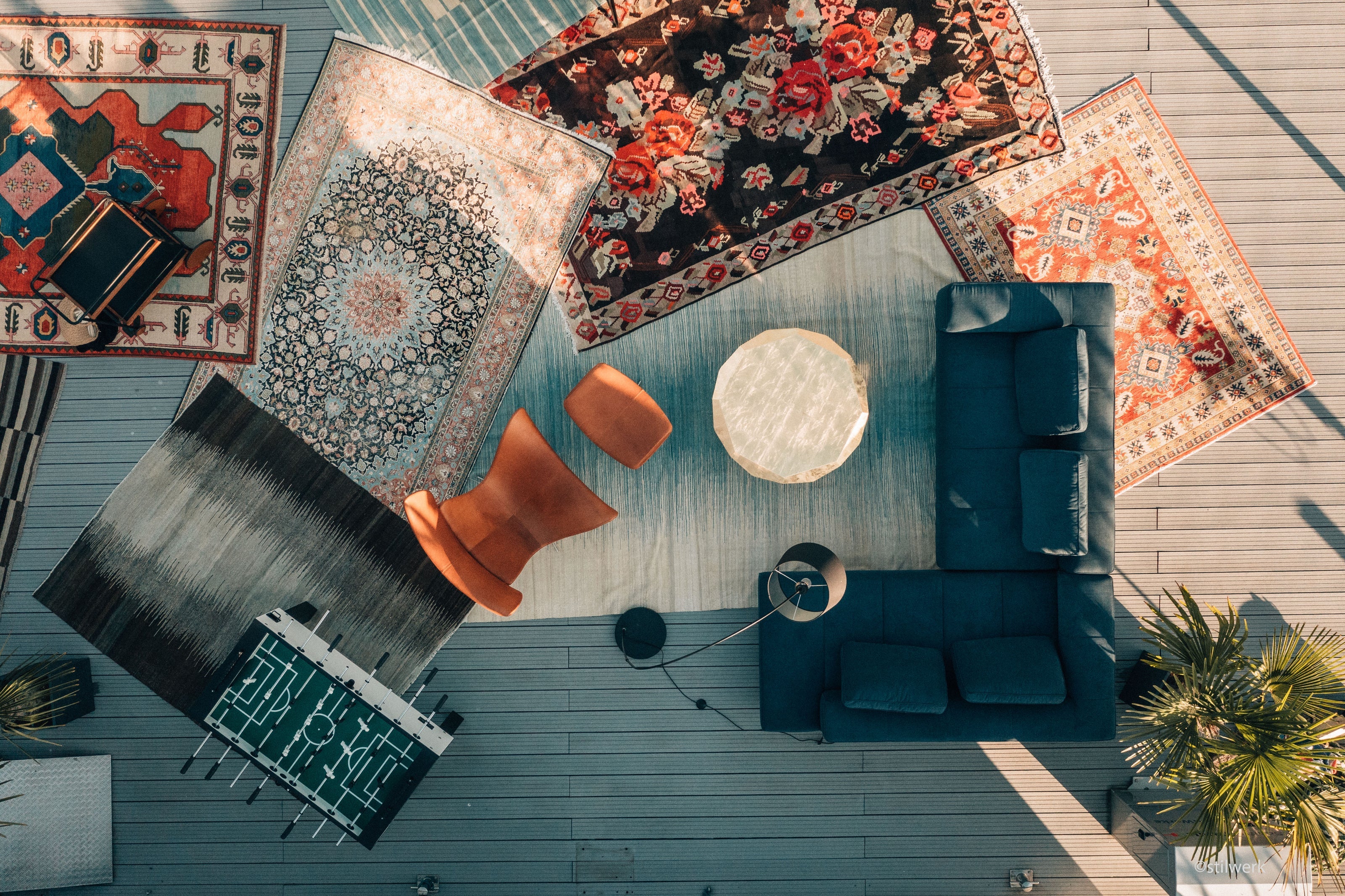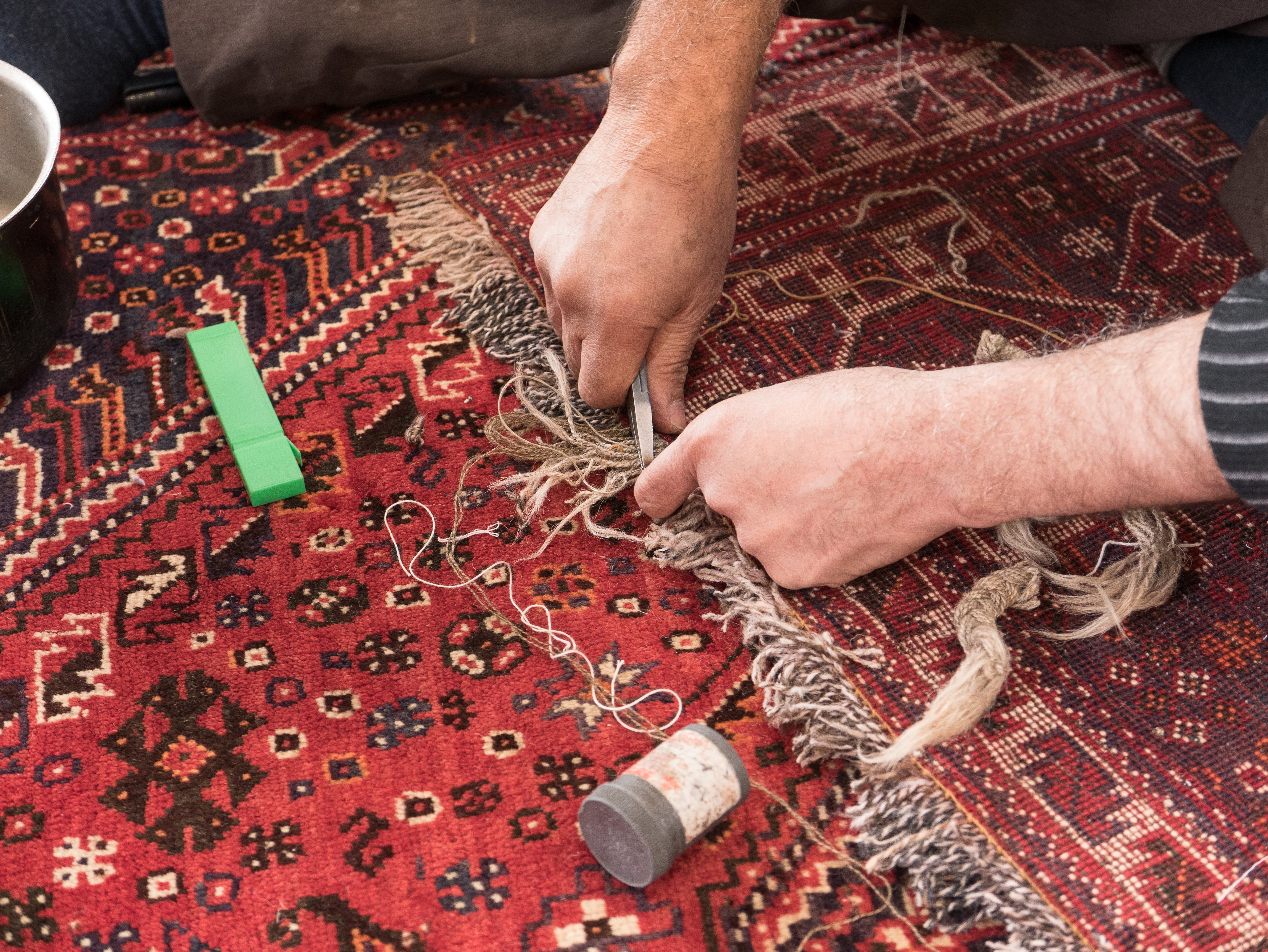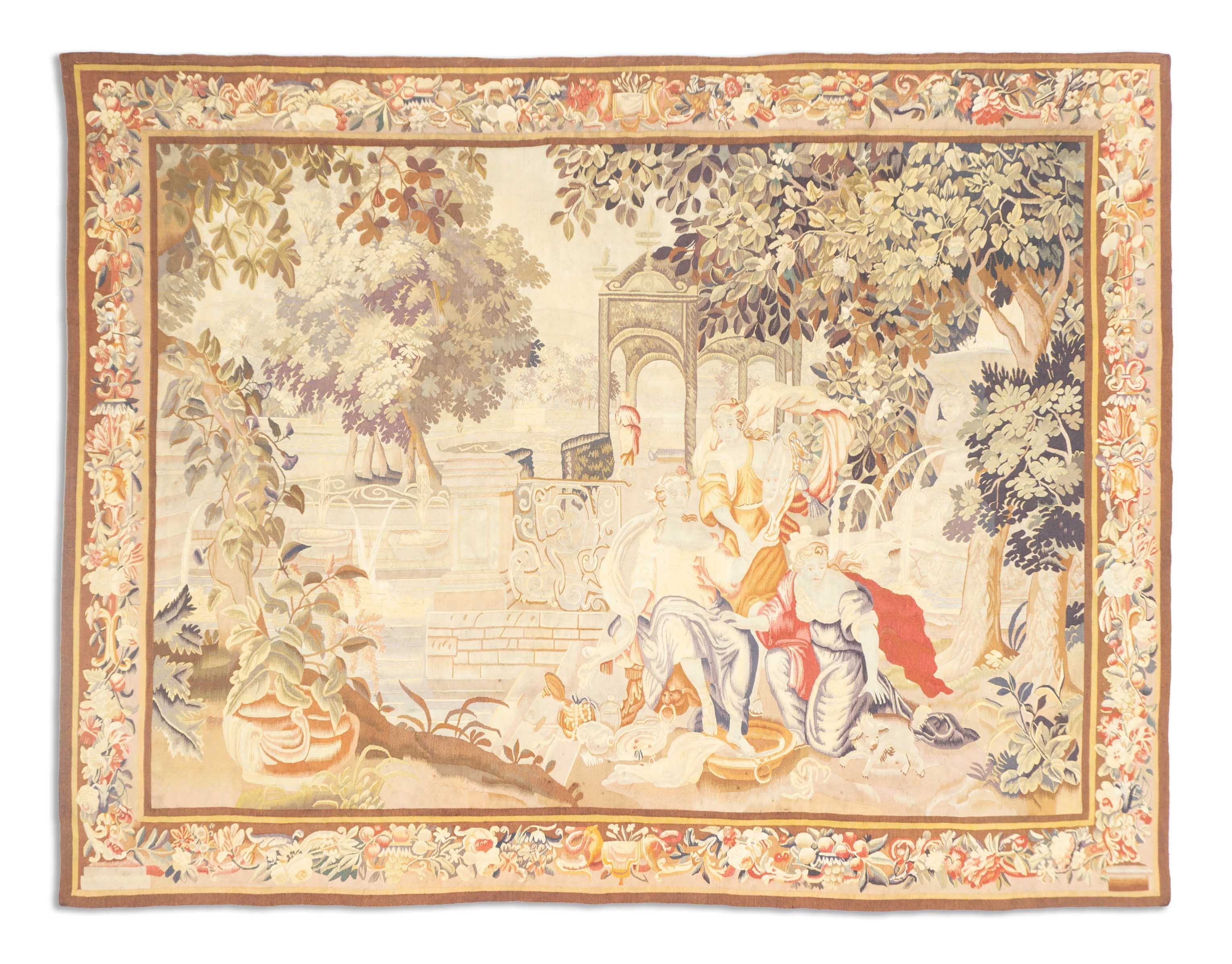
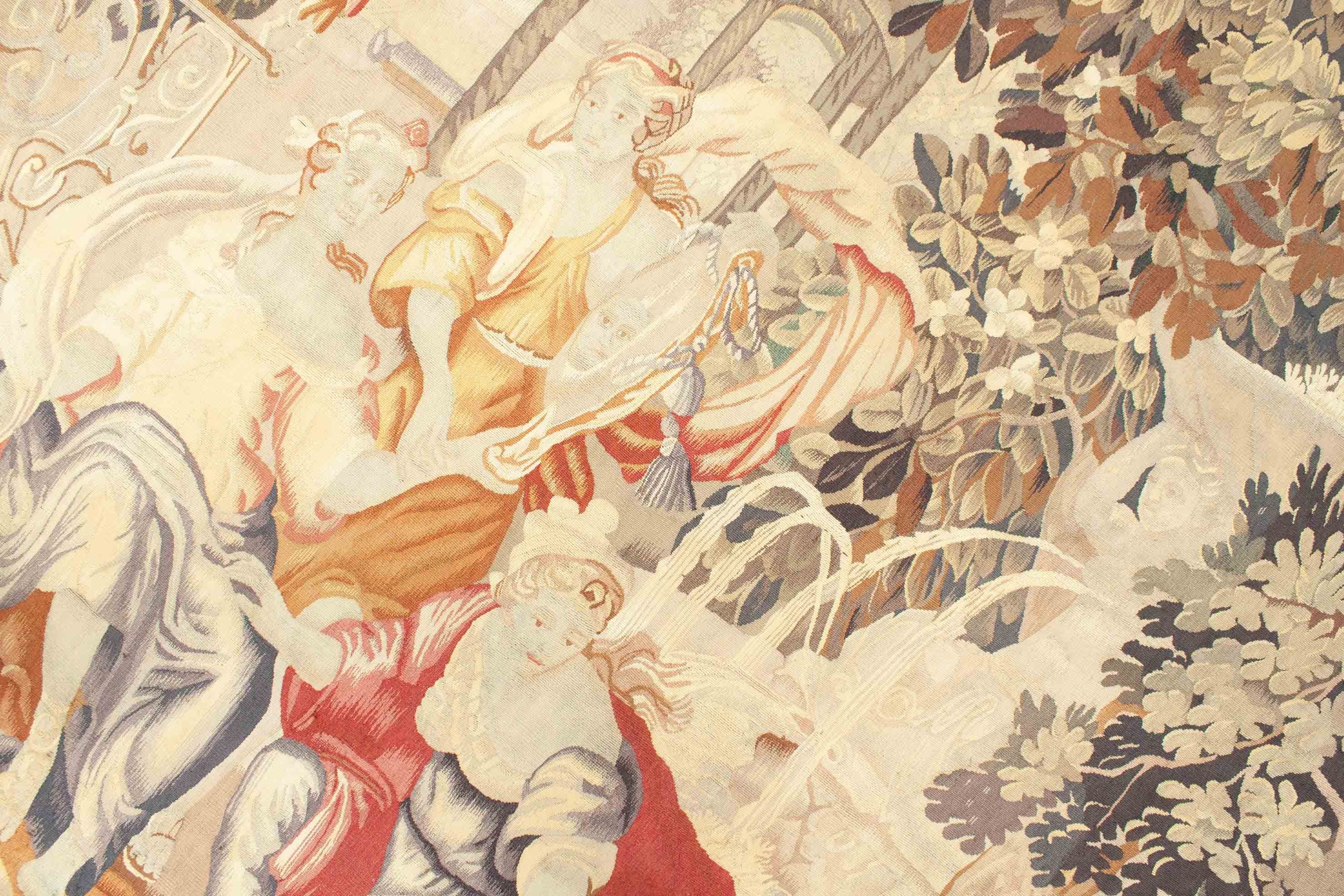
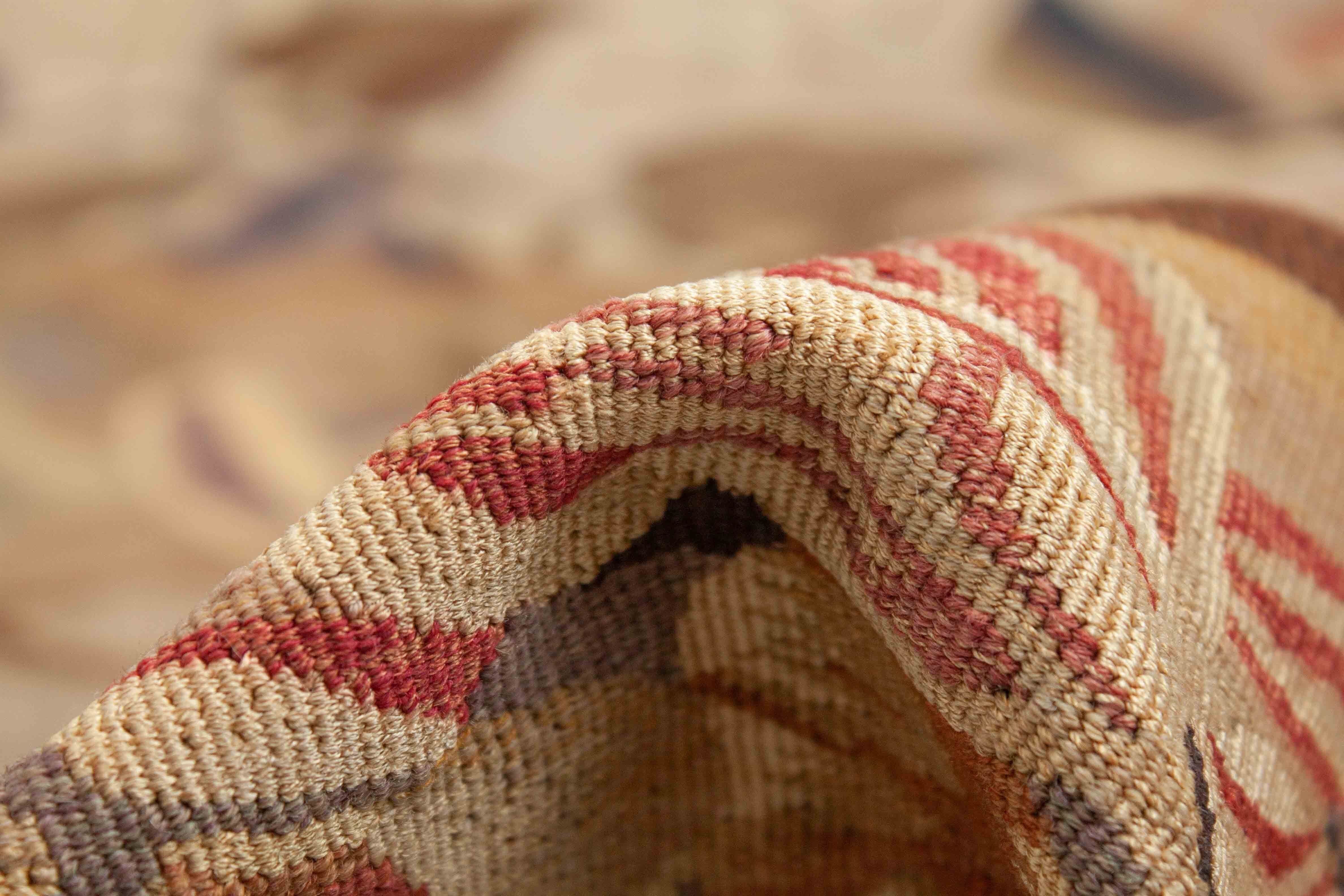
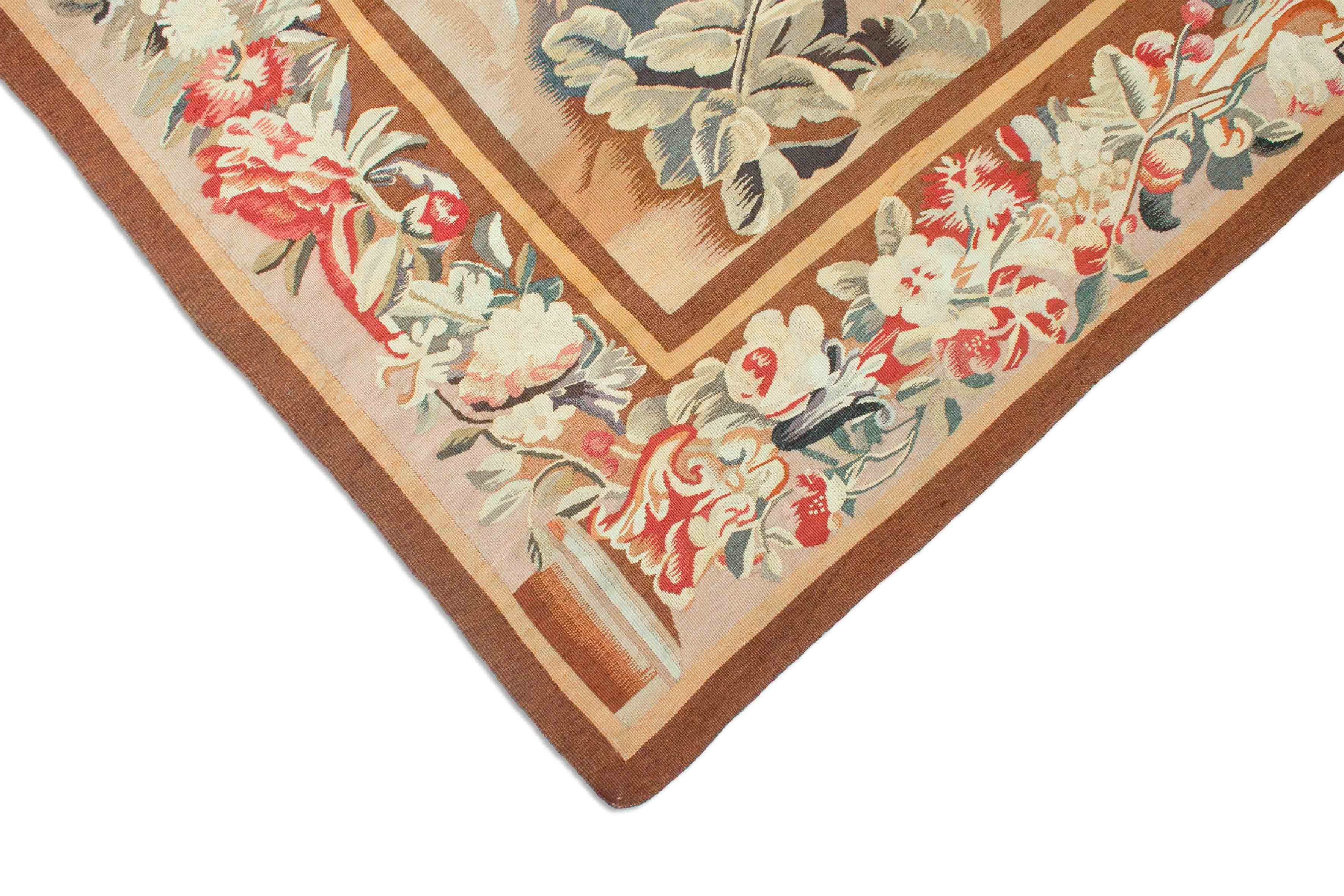
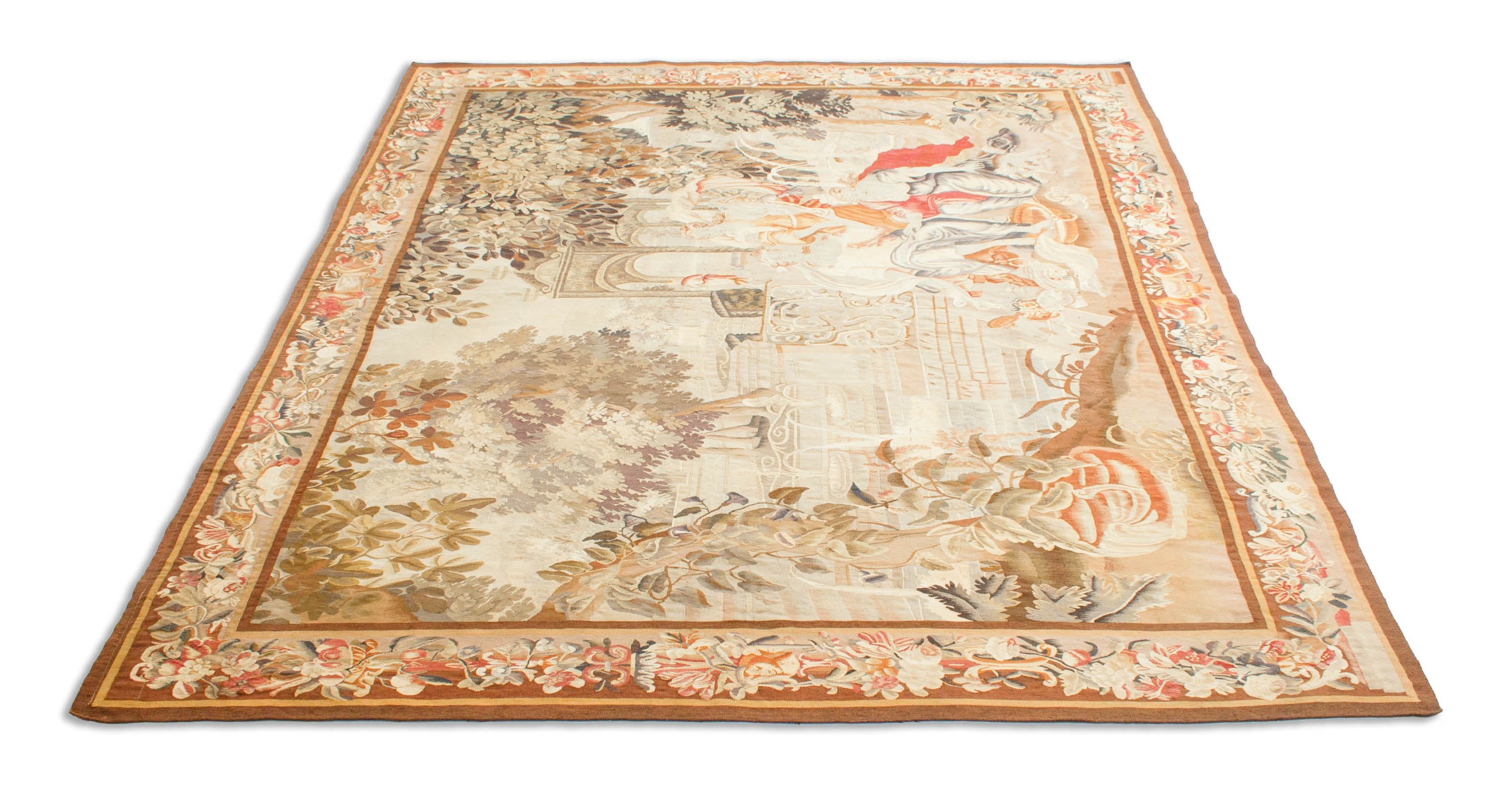
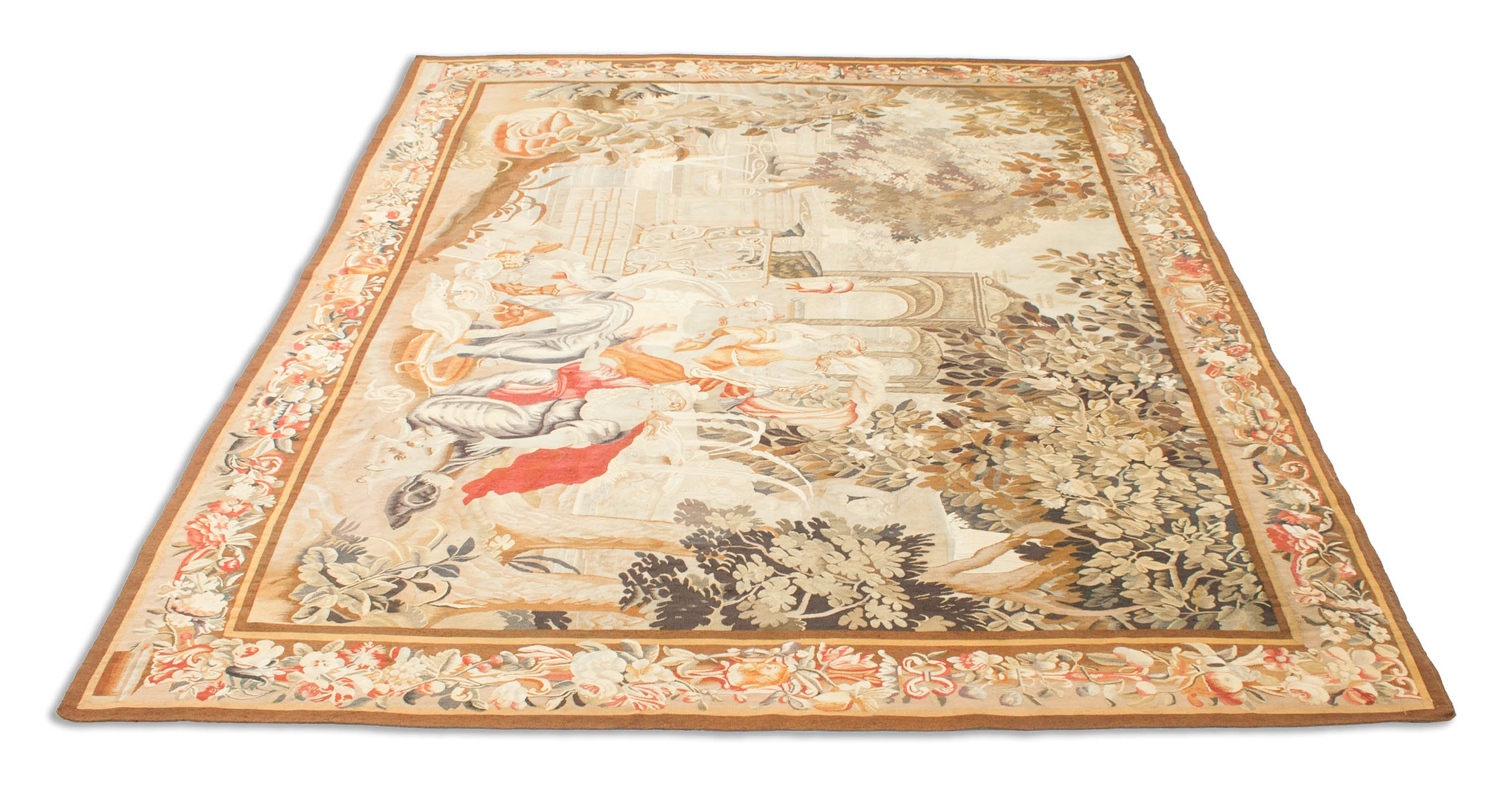
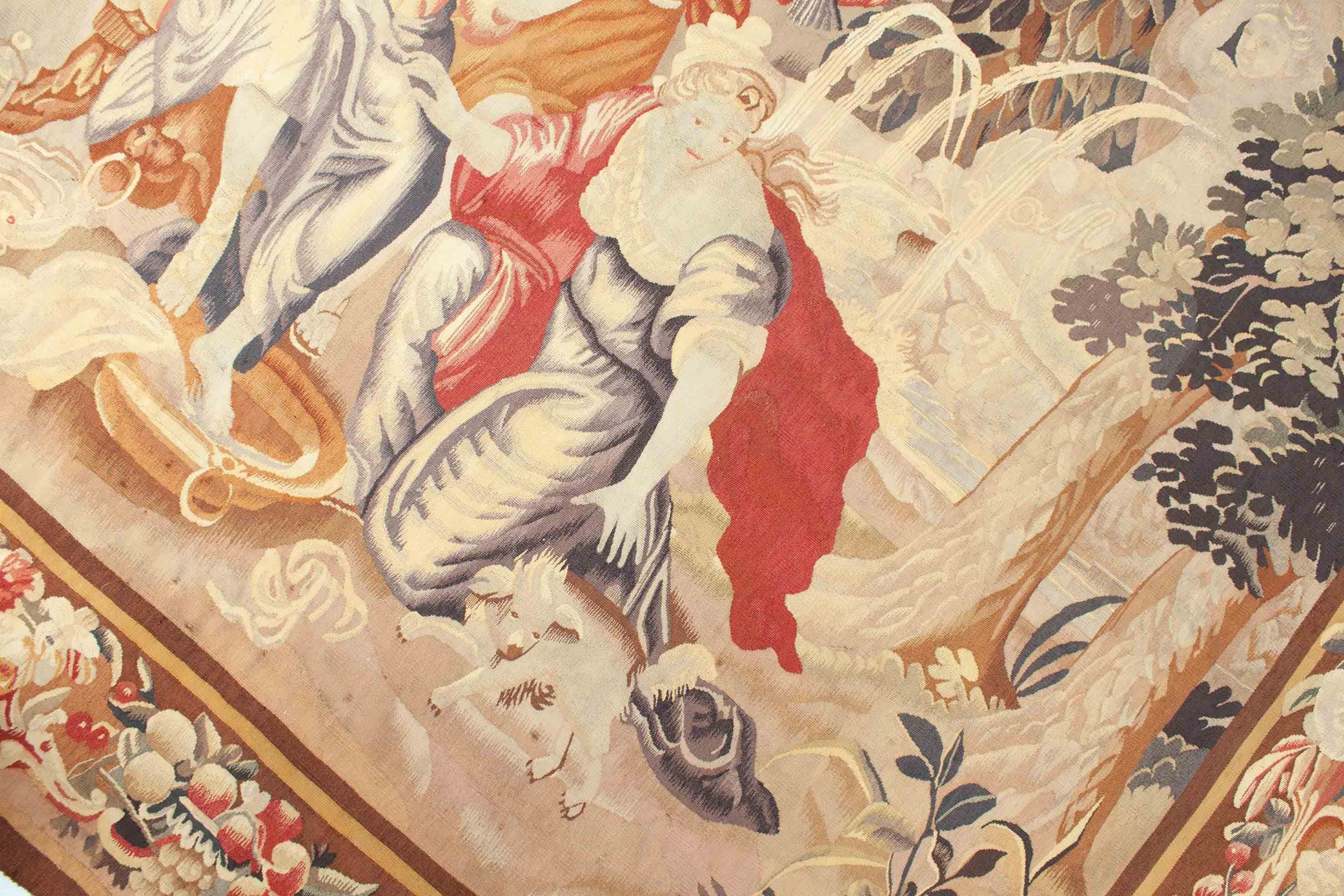
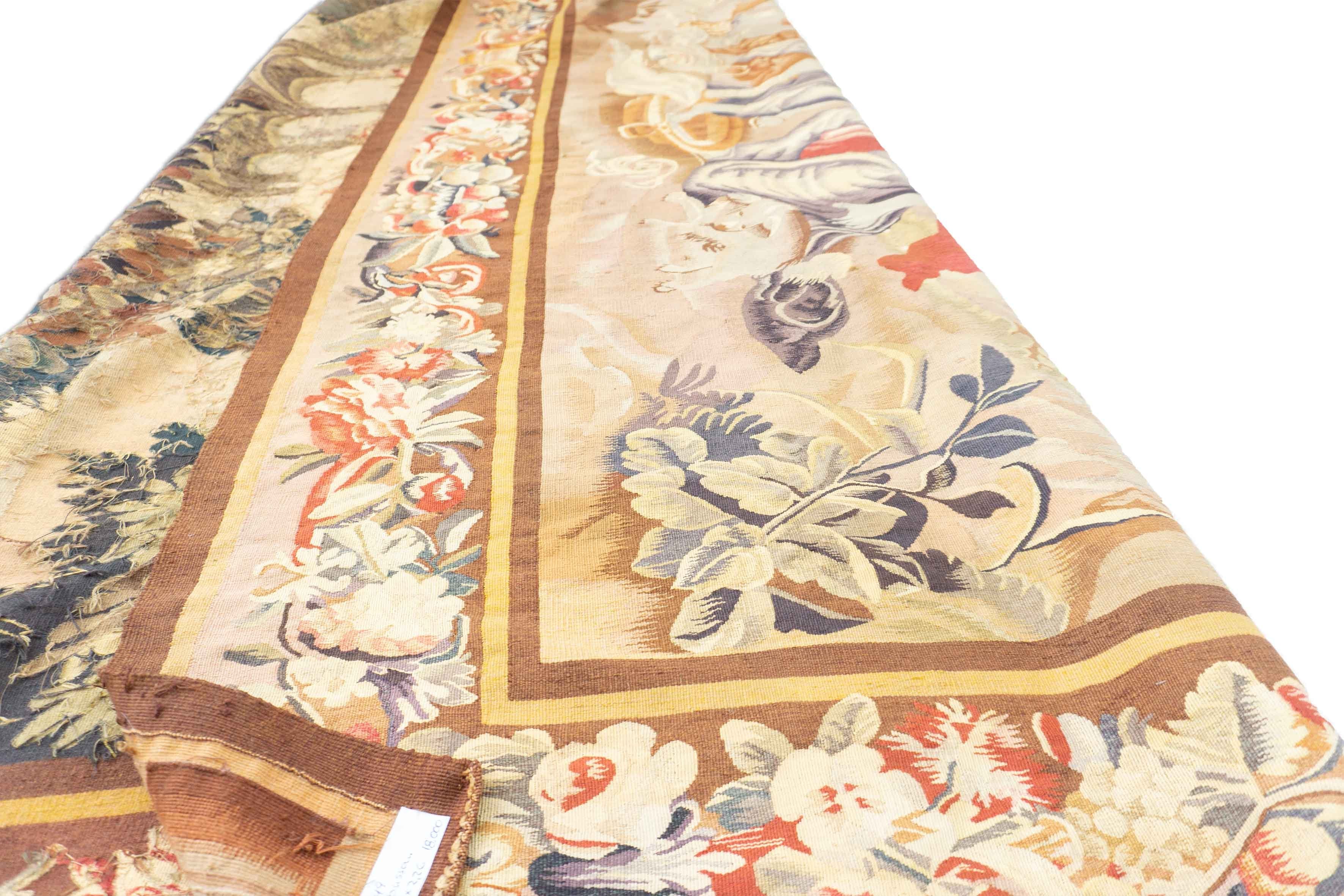
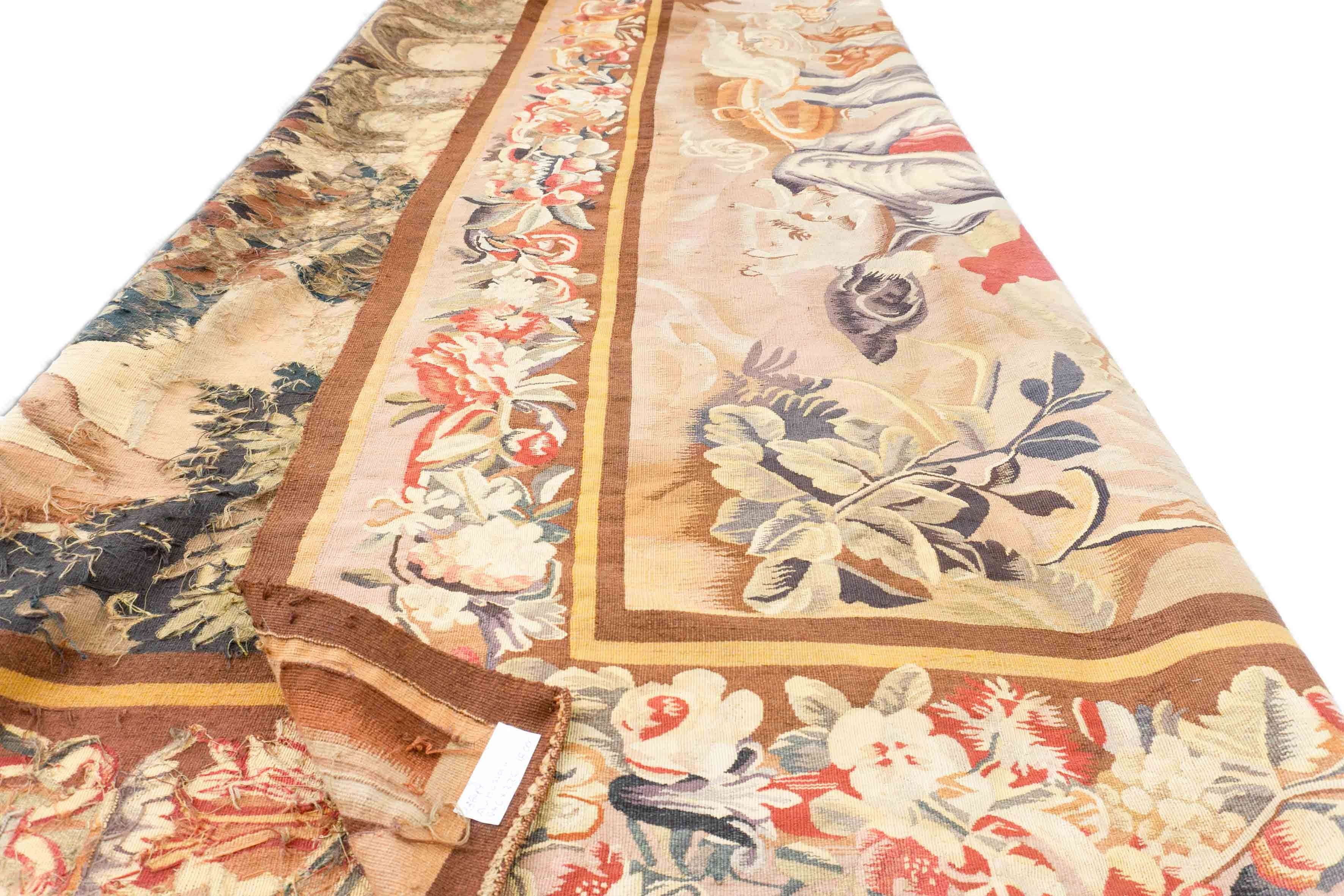
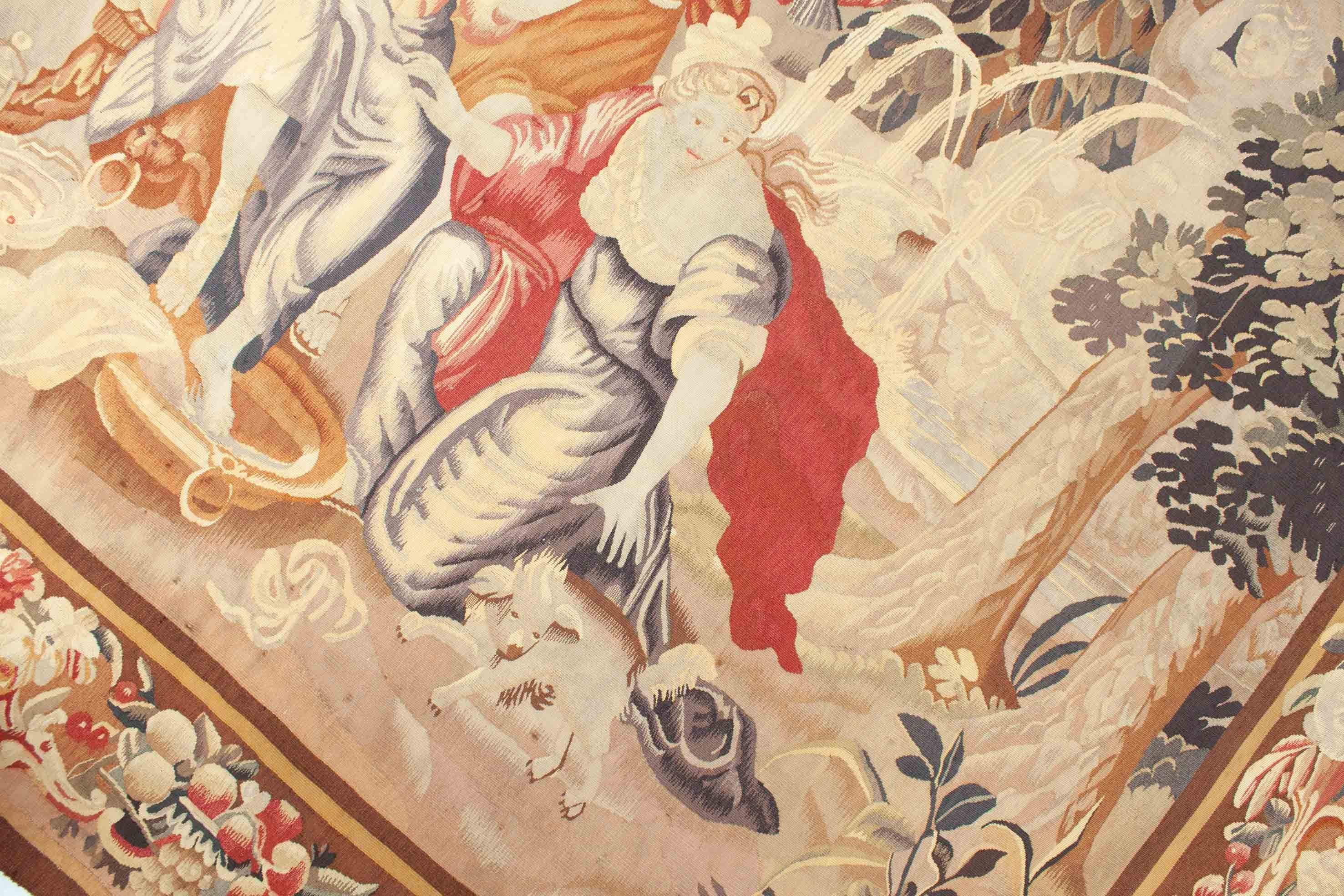
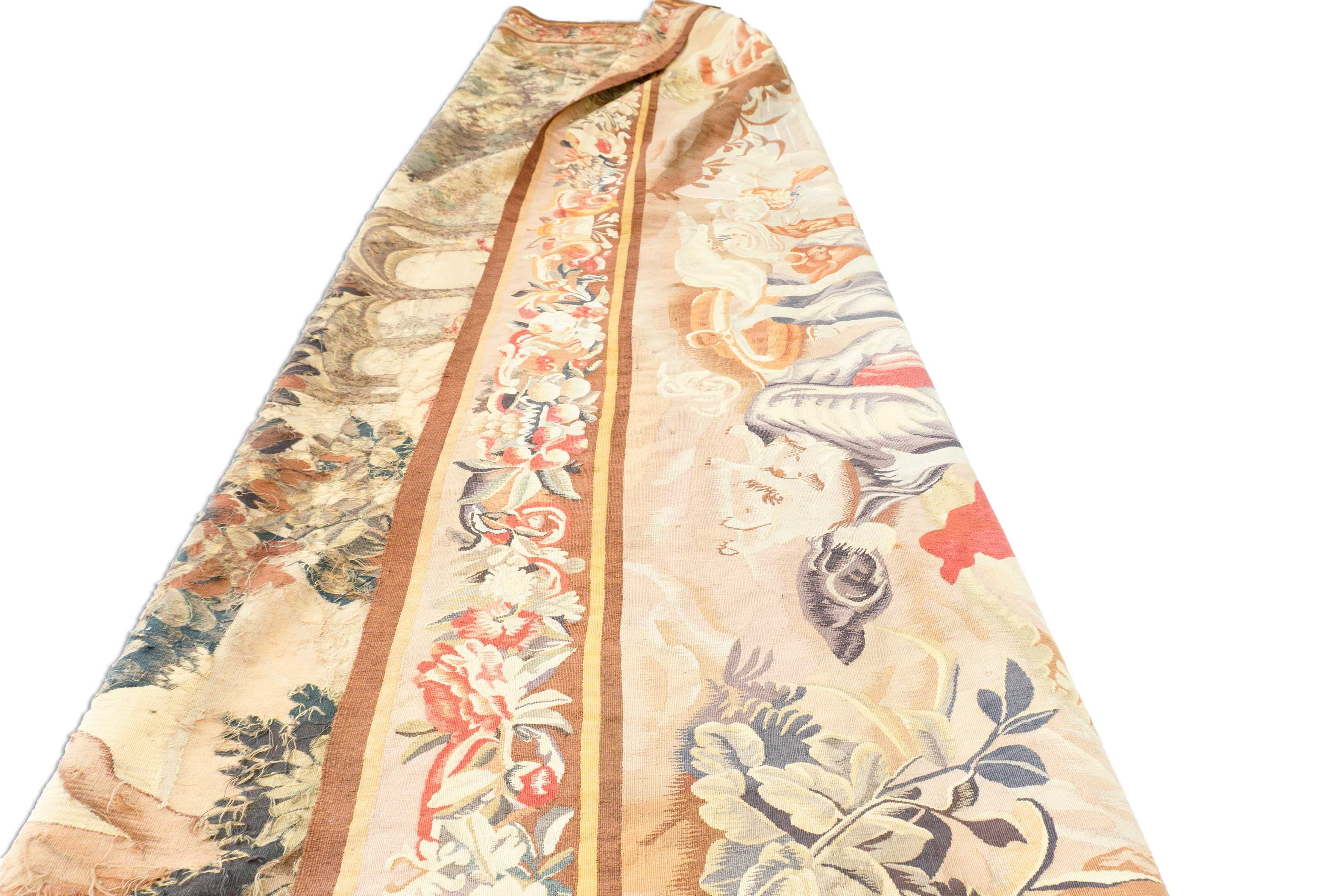
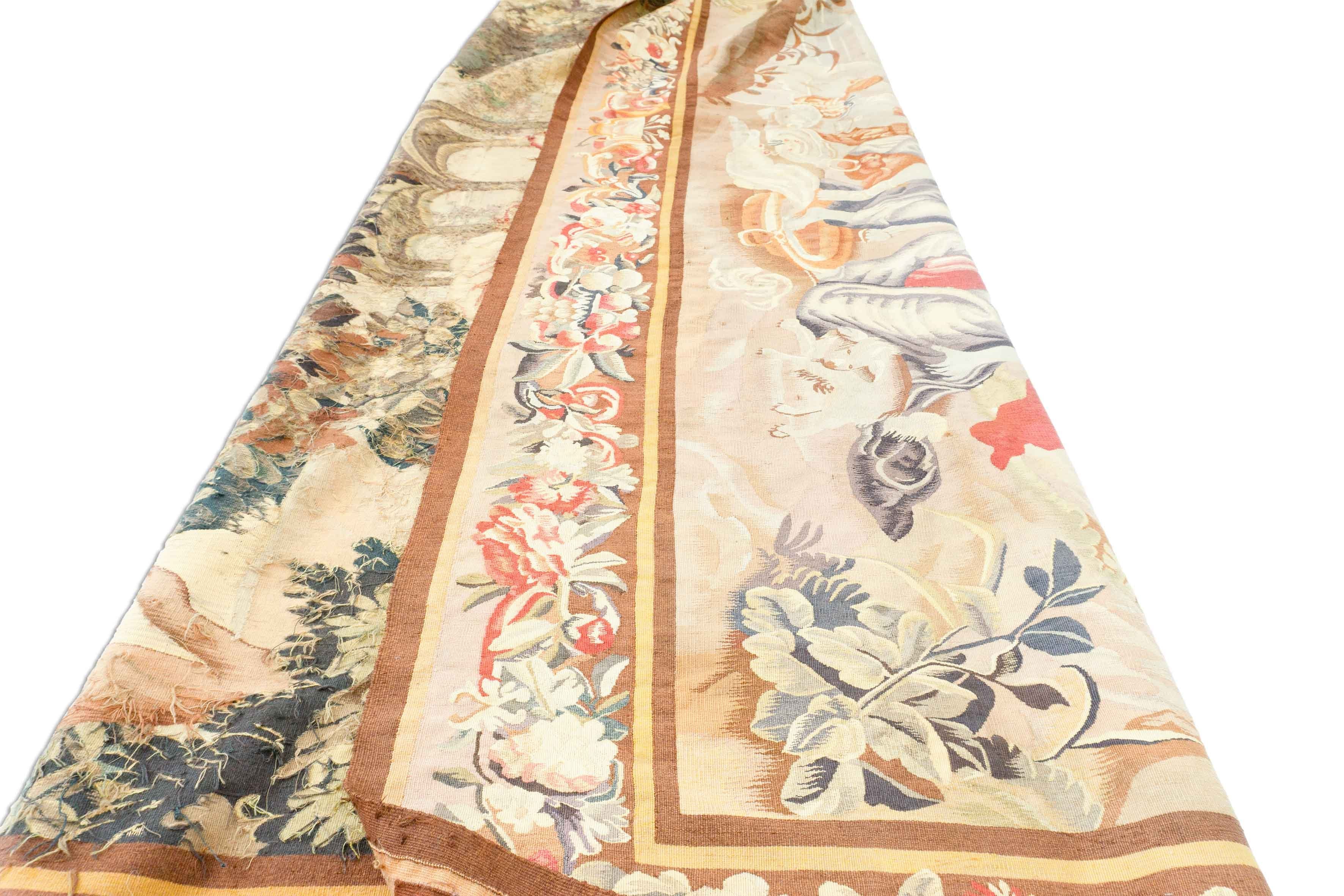
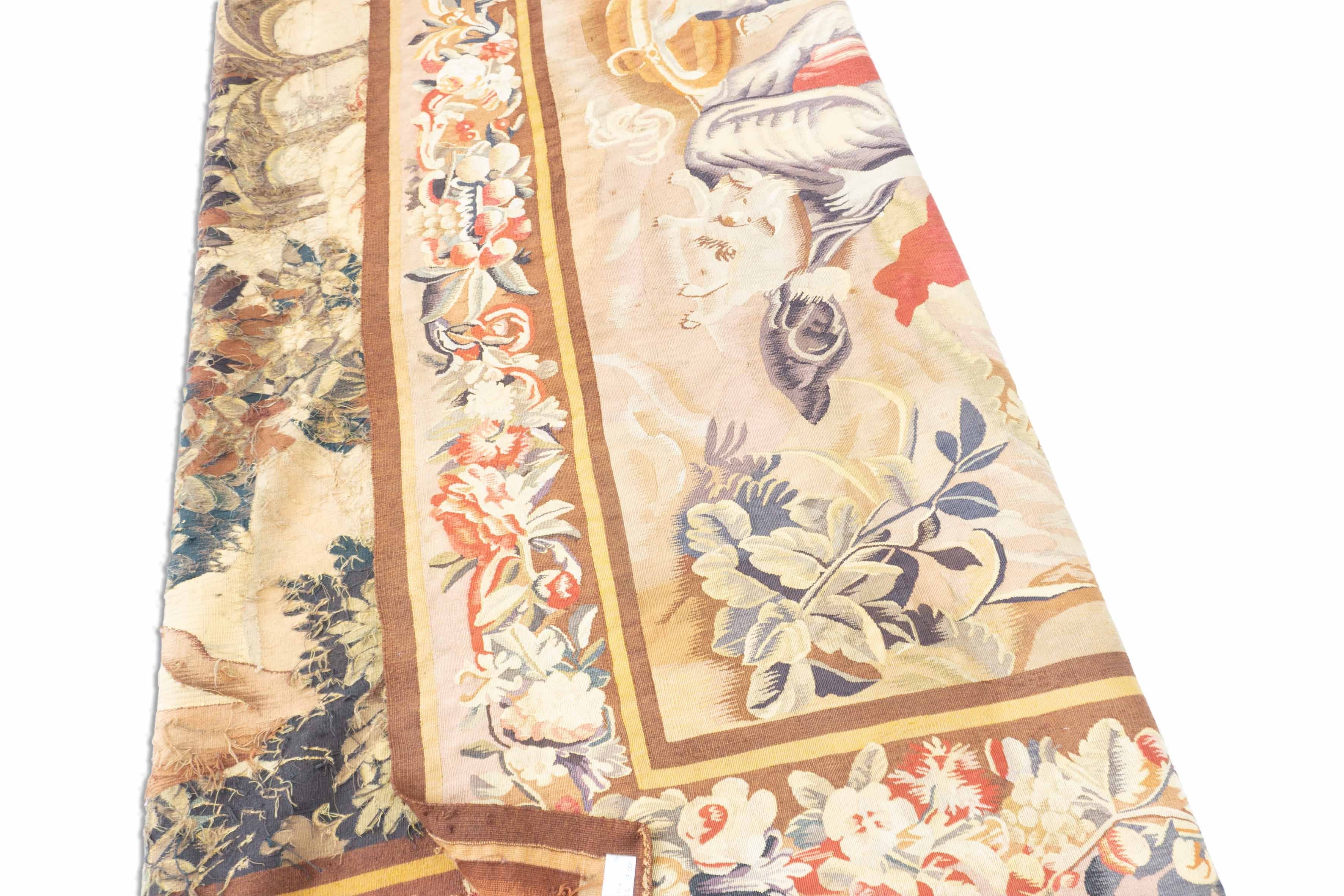
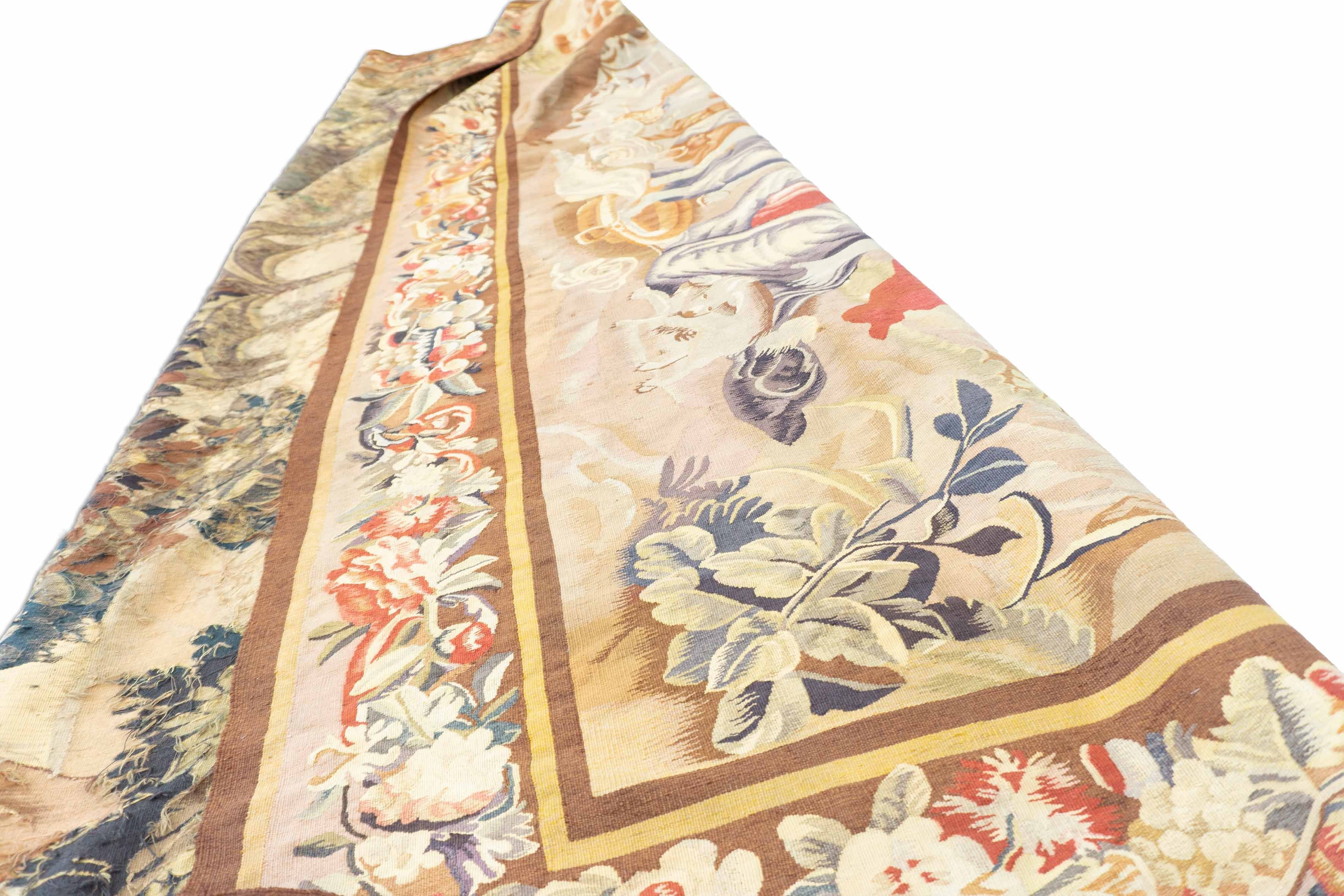
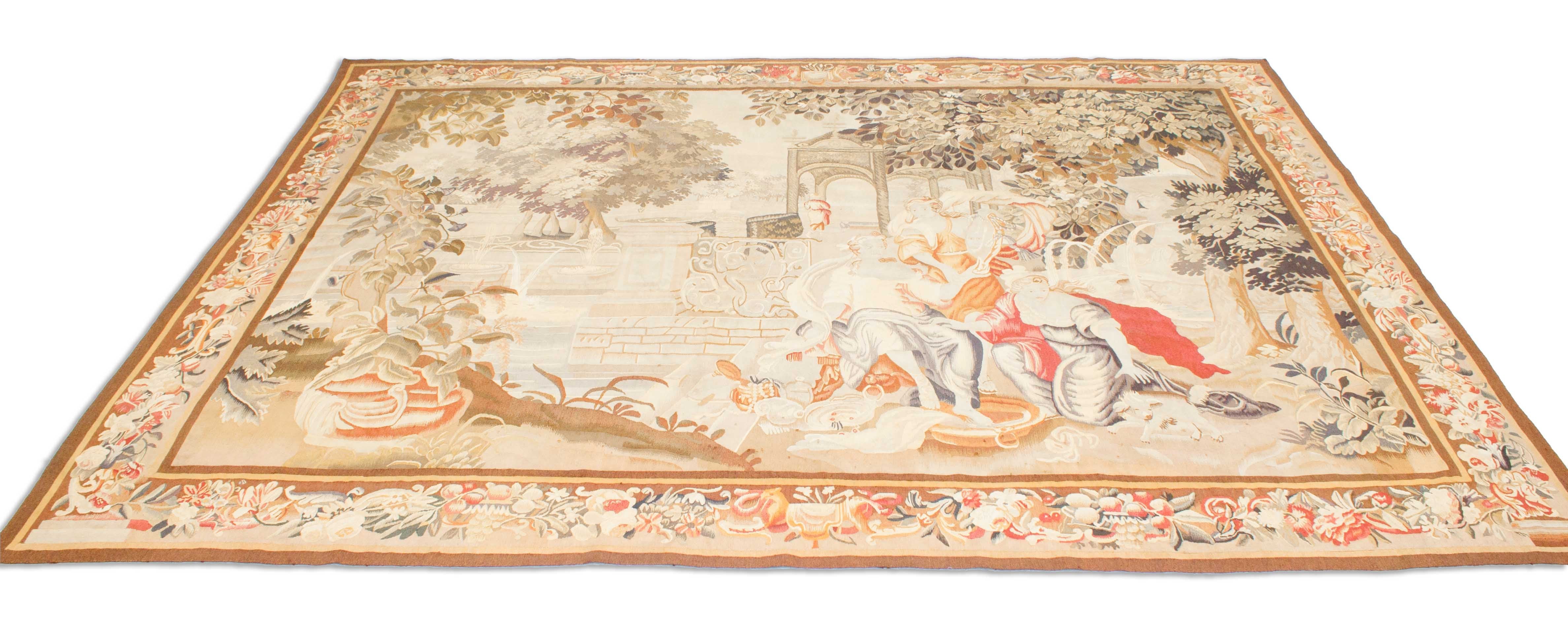
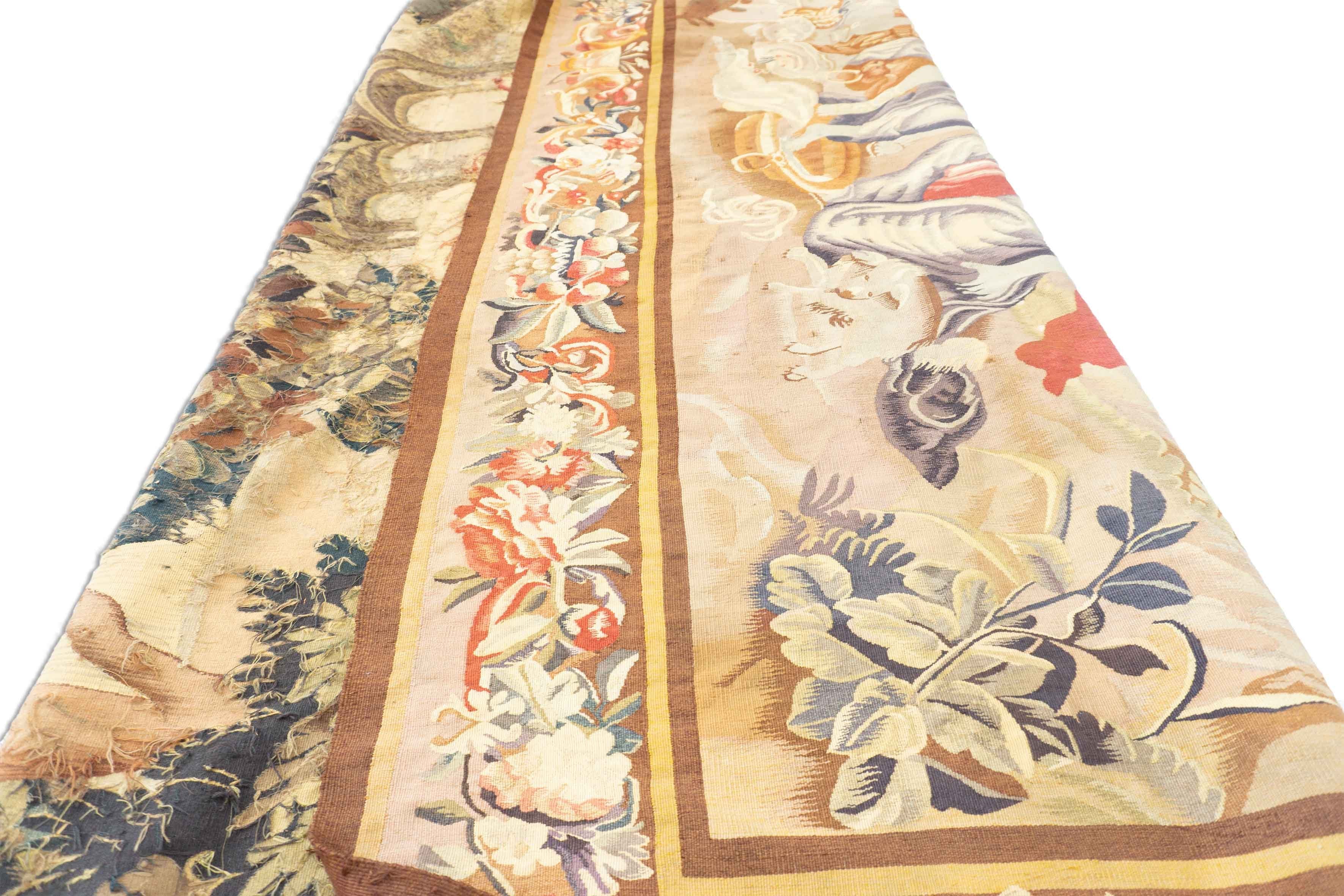
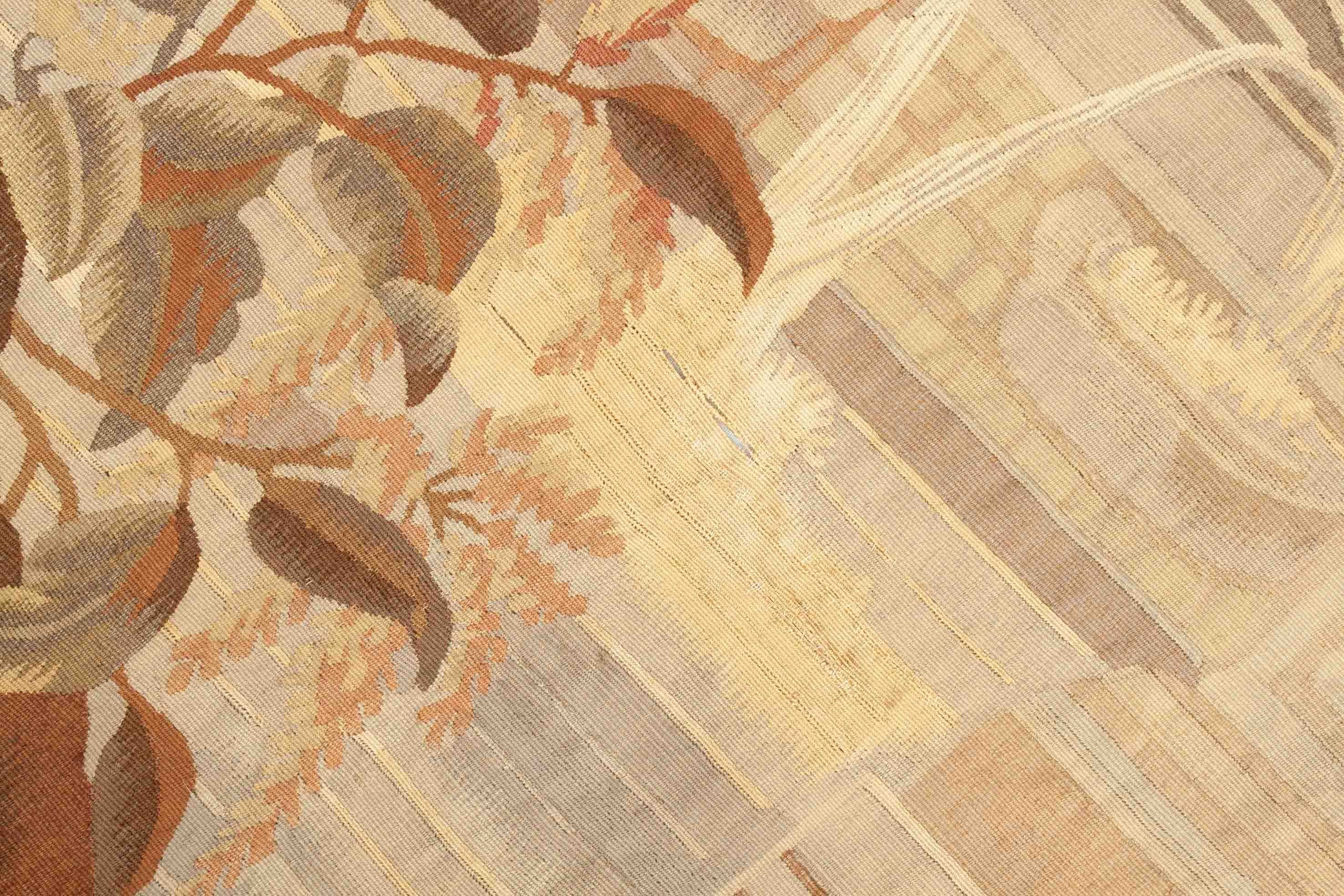
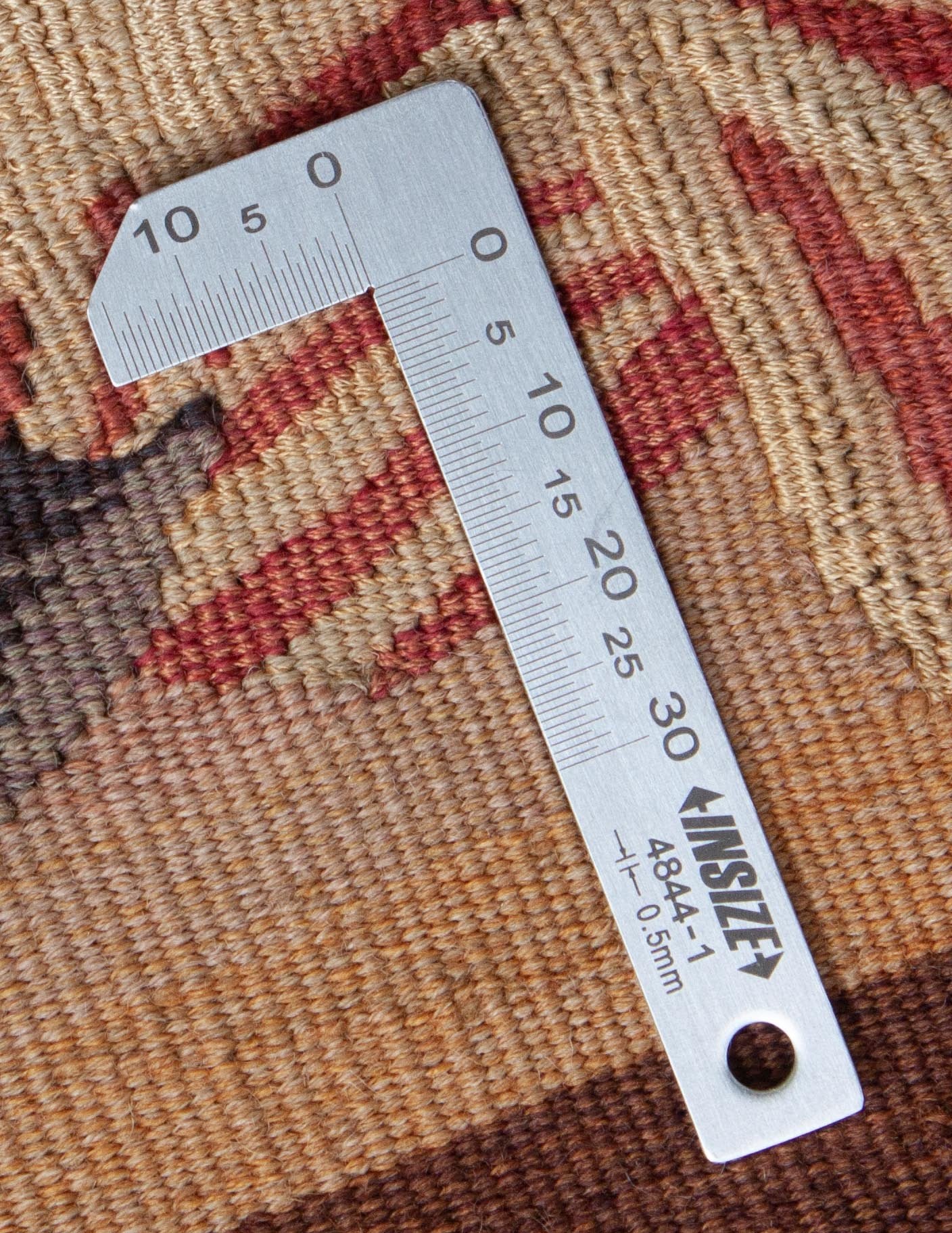
Antiker Tapestry
296 cm x 226 cm
Nr. 13849
|
|
1-3 Werktage Lieferzeit (deutschlandweit) |
|
|
14 Tage Probelegen |
|
|
Kostenlose Lieferung & Retoure innerhalb der EU |
Floral Antiker Tapestry with motiv and border
| Place of origin | Belgien |
| Size | 296 cm x 226 cm (= 6.69 qm) |
| Manufacturing | hand woven |
| Material | Weft (tuft): wool (handspun, natural color)Warp: cotton |
| Pile height | 4mm |
| Year of manufacture | 1880 |
| Coloring | |
| Edition | Single piece |
Place of origin
Tapestry rugs are often also called Gobelin rugs, alluding to the most famous wall or tapestry manufacturer in France, . The Gobelin Manufactory (Manufacture nationale des Gobelins) is a tradition-rich tapestry manufactory located on the Avenue des Gobelins in the 13th arrondissement of Paris. It was founded in 1607 as a private company and from 1667 onwards continued as the Royal Tapestry Manufactory. Since 1792 the manufactory has been owned by the French state and is regulated by the French Ministry of Culture. Today it is a museum, workshop, training center and definitely worth a visit.
The name of the manufactory is derived from the former scarlet dye works of the Gobelin family, who founded the company. Strictly speaking, Gobelin rugs are only those made in the Parisian Gobelin Manufactory. However, the name is often used as a synonym for high-quality tapestry rugs.
Tapestry rugs are distinct from the Aubusson and Savonnerie rugs. This is a bit confusing and is often done wrong, because tapisserie is the French word for rug. Strictly speaking, however, we in Germany understand tapestry rugs to mean only hand-woven or hand-knitted fabrics which, like this tapestry rug, have a motif. That is why tapestry rugs are also colloquially called wall or picture rugs. This antique Tapestry is a collector's item. It is about 140 years old and, therefore, a really special piece. Antique rugs like this Tapestry are still very popular and are sold at top prices by renowned auction houses.
Patterns
The embellished edging (border) forms a glorious contrast to the center and creates a transition at the edge of the rug.
The luxuriant flower motifs of this Tapestry are elegant and varied. The graceful vegetative symbols representing flowers, leaves and branches are artfully intertwined.
Condition
You are not the first to enjoy this Tapestry. It has had owners before you who have cherished and used it. It was hand woven about 1880. It has been thoroughly cleaned and is in good but unrestored condition. We have not restored this Tapestry, because we think it is as it is a special charm. If that's what you would like, we will of course restore the rug for you. Either way, this Tapestry will provide you with satisfaction for decades to come.
Material
The technique used to produce the materials of the pile of this Tapestry is over 200 years old. The wool is dyed with natural colors and spun by hand. Dyeing with natural or vegetable dyes is more complicated, expensive and time-consuming than dyeing with chemical dyes. For a bright red, for example, you would need about one kilogram of ground madder root per kilogram of wool as dye. For a strong, not too pale yellow, you would need two kilograms of the dye madder per kilogram of wool. Also spinning wool is time-consuming and labor-intensive. In addition, fewer and fewer people are able to hand spin wool.
But the effort is worth it: By dyeing with natural dyes, the high-quality wool retains its natural fat content. Wool dyed with natural colors and spun by hand creates fascinating, iridescent patterns. The charm of hand-spun wool with its slight irregularities and natural hues unfolds as a contrasting element in modern interiors, but also in rooms that are furnished in a more traditional or country house style.
Hinweis zu den Fotos
Kinderarbeit? Nein Danke.
Choose options


















296 cm x 226 cm
Nr. 13849
|
|
1-3 Werktage Lieferzeit (deutschlandweit) |
|
|
14 Tage Probelegen |
|
|
Kostenlose Lieferung & Retoure innerhalb der EU |

